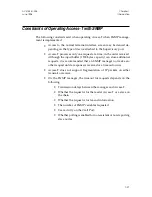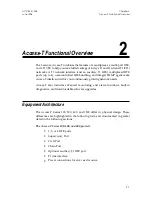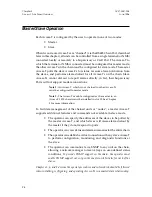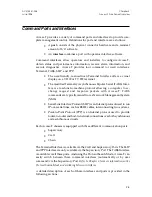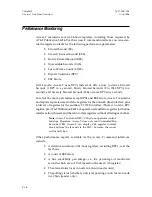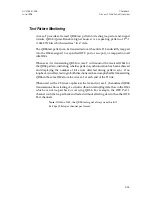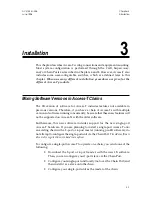
Network Interface
On the network side, Access-T provides a T1 signal composed of the multi-
plexed DTE signals. The interface meets all requiments for a T1 CSU in D4 and
ESF formats.
The line interface can be configured for the following parameters:
•
Format:
D4 or ESF.
•
Line coding:
AMI or B8ZS.
•
Line build-out:
0, -7.5, or -15 dB.
•
Yellow Signal:
Whether Access-T transmits Yellow Signal to the
network when it declares Loss of Sync.
•
In-band codes:
Whether Access-T responds to or ignores in-band
loopback codes.
•
Data link ID:
Whether Access-T responds to FDL commands as a CSU
or a DTE.
•
T1.403:
Whether Access-T supports the ANSI T1.403 standard for
ESF.
•
Bit 7 stuffing:
Enabled/disabled on a per bundle basis.
The line physical interface is as follows:
Access-T 1-Port, 2-Port, and 4-Port units employ a female DA15 con-
nector. An adapter is available to convert to an RJ48 jack.
Access-T 1500 units employ two 50-pin female RJ48H connectors. Each
connector provides network access for specific Access-T modules (slot
positions). Larscom provides a separate RJ48C connector for each T1 line
interface via a Patch Converter Panel accessory kit, as described in
Appendix E.
In ESF mode, Access-T responds to standard FDL commands (as described in
AT&T Publication 54016, Issue 2, September 1989), as well as CSU-type and
Larscom-proprietary FDL commands. In addition, Access-T can transmit one-
second performance reports to the network as specified in the ANSI T1.403
standard for ESF.
Chapter 2
ACST-0351-005
Access-T Functional Overview
June 1996
2-14

